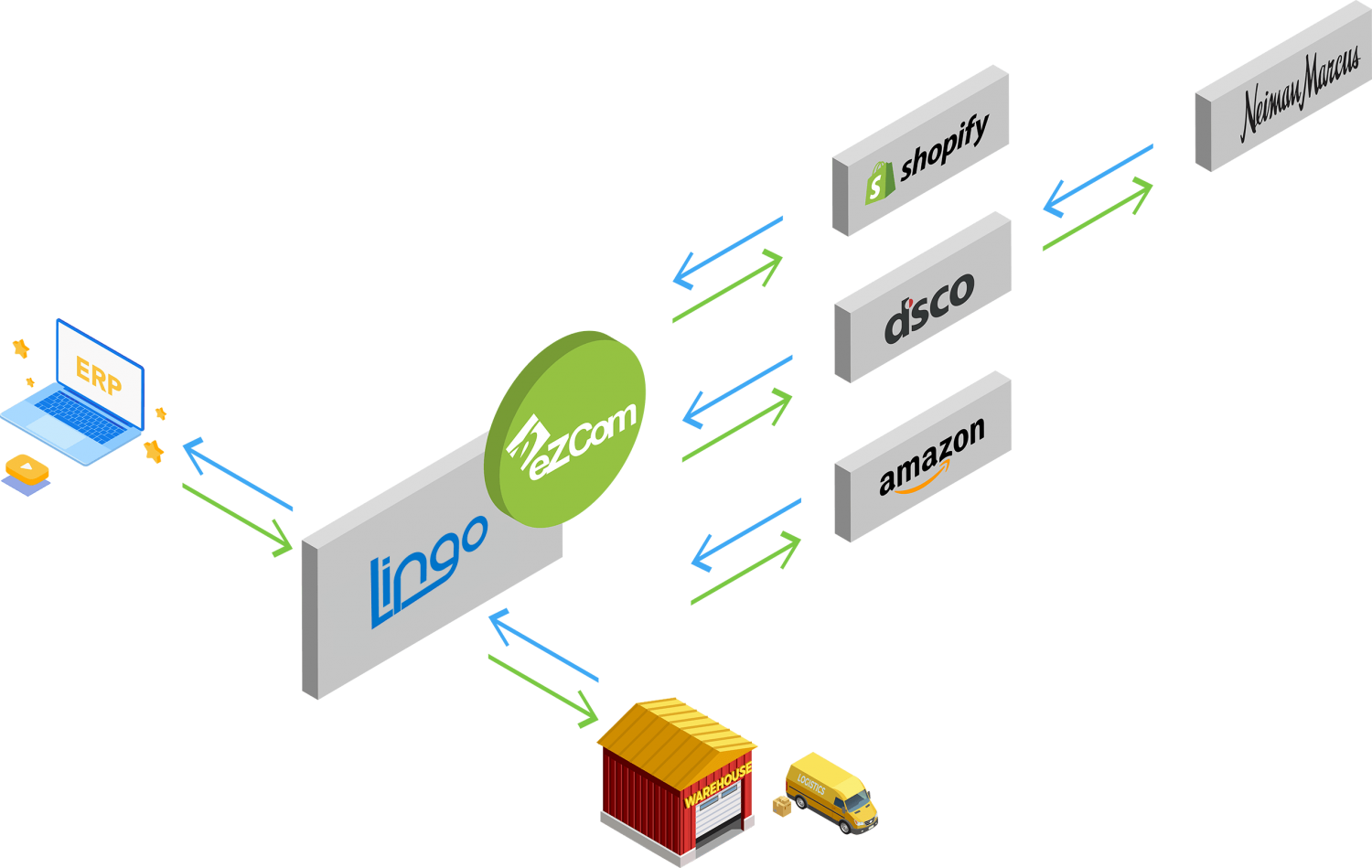If you sell your products to traditional retailers and major online marketplaces, Electronic Data Interchange (EDI) is an essential part of your business operations and integral to supply chain management. Most trading partners will require you to use it, and they will expect your company to meet the compliance standards they have established. If your organization is missing the mark, here are seven ways to improve your EDI process.
EDI is critical to the global supply chain, and that’s not going to change anytime soon. Retailers both large and small rely on it and expect their suppliers to use it as the trading partner platform—it’s standard protocol.
So, if EDI is something you can’t avoid, how do you make it less time-consuming and more efficient? Are you simply accepting the process you currently use when you could be actively working to improve it? Have you explored all the options to make EDI a part of the system that powers your business? Are you thinking about EDI as part of your database management system instead of an obstacle you have to overcome?
Rather than treat EDI as a challenging requirement, think about it as an opportunity. Done well, EDI becomes a competitive advantage, establishing you as a reliable supplier and separating you from competitors. What’s more, if your EDI process is cost-effective and less time-intensive, you’re gaining resources you can use to grow your business.
With fewer mistakes, a more automated flow of data, and increased integration, you can transform EDI at your company. Choosing the right full-service provider is a critical part of this process, but knowing how you can improve EDI efficiency should guide you when selecting one.
Here are six ways to improve your EDI process.
1) Integrate EDI with the system that powers your business.
“Customers require the effective integration of technologies to simplify their workflow and boost efficiency.” —Ann Mulcahy, former Chair and CEO of Xerox Corporation
Instead of viewing EDI as a separate, untethered process, merge it with the system that powers your business. That can be an ERP like NetSuite or SAP, accounting software like QuickBooks, or your Warehouse Management Software. If you use a 3PL provider or contracted logistics company, you can increase efficiency by seamlessly integrating with their system as well.
Not only will you save time and reduce the errors that often result when systems are not integrated, you’ll also gain a new level of control over your business. See more data, work with it more quickly, and respond to changes with real speed.

2) Integrate EDI with major shipping providers.
Getting orders is the lifeblood of your business. And getting them shipped in a timely, cost-effective way is critical.
Instead of copying-and-pasting data from the order, integration with shipping providers lets you automate the process. With Lingo, order information can be moved seamlessly to FedEx, UPS, USPS, Stamps.com, Endicia, and others. You’ll add speed to your EDI process and eliminate the costly mistakes that can damage both trading partner relationships and the consumer experience.
3) Automate more tasks.
Without automation, EDI can include lots of manual entry. Not to mention lots of mistakes.
Fact is, copy-and-paste and other high-touch tasks lead to errors. After all, humans are just that—human—and even the most diligent, attentive person will make mistakes when doing repetitive work.
Automation does more than simply eliminate errors. EDI, when done manually, is a slow, time-consuming endeavor. When companies automate, they can begin bulk processing of orders as well. Instead of moving individual orders one at a time, they can complete hundreds or even thousands of transactions in just a few keystrokes.
All that speed not only frees up hours you can use to focus on your core business, it can also make your order-to-cash cycle faster. When you process orders more quickly, you can expect to see payments sooner as well.
4) And definitely automate the ASN.
Even if you’re not sure how much automation you’re prepared to introduce to your EDI process, at least take this step: automate the ASN (EDI 856).
Why? For starters the ASN is one of the most utilized documents across all trading partners. The purpose of the ASN is to communicate important details about the shipment that the trading partner will be receiving, such as when it will arrive, how it will get there, and what is included in the shipment. It can be a time-intensive document when done manually—automating the process can free up hours of valuable time.
The ASN works in conjunction with GS1-128 labels, allowing the retailer to know exactly what is in each carton simply by scanning the barcode. When they scan the label, it will match to the ASN and the retailer will see the details about the carton contents, such as the product, color, size, weight, and quantity.
A powerful EDI platform will give you the option to automate the ASN. For instance, our Lingo software can create and/or transmit ASNs automatically. This is accomplished by presets that are entered into the account during setup, although they can be updated or changed at any time.
To automate the creation of the ASN, a tag defined in trading partner settings is applied to the order when it arrives. That tag triggers the automation process to begin. The ASN will be created and the relevant labels, Bill of Lading document, and Packing Slips will be emailed to the specified recipient or recipients.
The process can be automated further by having the ASNs transmitted automatically, based upon presets that establish the tag that will trigger the auto-send, as well as the time or times the document should be sent. Instead of going into the system and sending each ASN individually, users can let Lingo handle this task.
It’s also valuable to connect the ASN and the Invoice, and this can be set up in the System Settings in Lingo. Once this is established, the system will automatically create the Invoice from the ASN when the document is sent. By connecting the Invoice to the ASN, brands and suppliers can be confident that the two documents will match precisely. That translates into faster reconciliation, and strengthens the business relationship because both parties have confidence that the information is correct.
With a platform like Lingo, you can be confident that EDI documents are sent automatically, and that all the necessary routing information is exchanged.
5) Pack consistently.
Creating repeatable approaches for packing can significantly improve your EDI process. Rather than have staff using a new packing method each time they ship an order, establishing custom presets will increase speed and help ensure you stay compliant with your retail trading partner.
You’ll also want to make sure you are packing your items in a way that is as efficient as possible and compliant with retailer standards. If you do high volume shipping, imagine how much total time will be saved if you shave off a few seconds every time products leave your warehouse. Over a day, over a week, a month, a year—you get the idea. The best supply chains make every step of the process productive and fast.
Want to know more about packing efficiently? We have more than 15 custom packing solutions so you can find choices that work for you and your company.
6) Validate. Then validate again.
As much as bringing more speed to your EDI process will improve it, all those gains will be wiped out if they come with mistakes that lead to costly chargebacks and stalled orders.
Validation checks ensure that documents are not sent with incomplete or missing information. Double-validation checks will review forms for errors of omission more than once. Preventing mistakes saves you both time and money—less back-and-forth, no chargebacks, enhanced trading partner relationships—and makes your EDI process seamless.
7) Work downstream, not up.
Your workflow is unique to your organization. That means improving your EDI process starts with analyzing how your company manages its supply chain right now. Trying to implement changes that don’t match anything in your current system will only create obstacles—people won’t embrace it, mistakes will occur, and frustration will ensue.
Here at eZCom, we believe in custom solutions. When we work with customers, we start with a Discovery process that uncovers the unique qualities of your order processing. From there, we establish the appropriate service levels and establish a workflow that will be efficient and embraced by the people who will be using Lingo.
Turn EDI into a competitive advantage.
How well you manage your EDI process can be critical to your success. And as you grow your company, it grows in importance—mistakes become more costly, inefficiency more glaring.
By focusing on these seven ways to improve your EDI process, you can transform something that many consider challenging and cumbersome into a true competitive advantage. Your company will be more efficient, and your trading partners will be confident about expanding their business with you.





